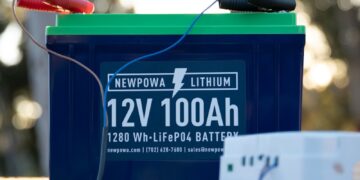Deep in the heart of Louisiana’s Richland Parish, a $10 billion data center hums with life, its servers processing a ceaseless stream of AI algorithms, cloud services, and social media feeds. This is Meta’s latest digital fortress, a nerve center of the modern world where uptime is non-negotiable. Data centers like this one are the backbone of our digital economy, but their energy appetite is voracious. According to the International Energy Agency (IEA), these facilities consumed 1-1.5% of global electricity in 2024, with projections suggesting AI-driven data centers could rival Japan’s energy use by 2035—equivalent to powering 100 million homes. The challenge is epic: keep these digital engines running 24/7 while slashing carbon emissions to meet ambitious net-zero goals set by tech giants like Google, Amazon, and Meta. The solution unfolds as a compelling story, woven from an unlikely trio—natural gas, solar energy, and battery storage—working in harmony to redefine sustainable power for the digital age.
The Relentless Energy Hunger of Data Centers
Data centers are the unsung heroes of our connected world, but their energy demands are staggering. A single hyperscale facility can consume as much power as a small city, with AI workloads driving exponential growth. The Uptime Institute estimates that global data center power demand could double by 2030, fueled by generative AI and cloud computing. Yet, these facilities must operate without interruption—downtime can cost millions per minute. Meanwhile, environmental pressures are mounting. Companies like Meta, which aims for net-zero emissions by 2030, face scrutiny to align their energy use with sustainability goals. Renewables like solar and wind are critical, but their intermittency—solar fades at night, wind stalls in calm weather—makes them unreliable alone for 24/7 operations. This is where the hybrid model of natural gas, solar, and battery storage steps in, offering a pragmatic path to balance reliability, cost, and eco-consciousness.
Natural Gas: The Reliable Anchor
In Louisiana, Meta’s data center relies on three combined-cycle gas turbines (CCGT) from Entergy Louisiana, delivering a robust 2.26 gigawatts of power. Natural gas is the steady hand in this energy saga, ensuring servers stay online no matter the weather. Unlike coal, which it has largely displaced in the U.S., natural gas emits about half the CO2 per kilowatt-hour, making it a cleaner transitional fuel. The U.S. Energy Information Administration (EIA) notes that 60% of the U.S. power sector’s emissions reductions over the past two decades stem from switching from coal to gas, with renewables contributing the rest. In Virginia, the epicenter of U.S. data centers, demand is so intense that a new 1.5-gigawatt gas plant may be needed every two years, according to Bloomberg.
Natural gas’s flexibility shines in behind-the-meter solutions, where data centers bypass grid delays. In Texas, Energy Transfer will supply 450,000 MMBtu/day of natural gas to CloudBurst’s data center campus, powering on-site generators. These setups avoid interconnection queues, which can stretch 4 to 8 years in advanced economies, per the Lawrence Berkeley National Laboratory. Natural gas also supports rapid scaling—critical for AI facilities that can require up to 1 gigawatt each, equivalent to powering a million homes. Yet, gas isn’t the whole story. Its emissions, while lower than coal’s, still clash with net-zero ambitions, pushing companies to weave in cleaner energy sources.
Solar Power: The Clean Energy Star
Across sunlit fields in Georgia, solar panels stretch toward the horizon, feeding power to Meta’s data centers through a partnership with Silicon Ranch. Solar energy is a cornerstone of the eco-business narrative, offering clean, cost-effective power. In regions like Texas or Southeast Asia, where sunlight is abundant, solar can slash energy costs significantly. The International Renewable Energy Agency (IRENA) reports that solar photovoltaic costs have plummeted 80% since 2010, making it one of the cheapest sources of new electricity. Tech giants like Google, which matched 100% of its 2024 energy use with renewables, rely heavily on solar through power purchase agreements (PPAs). In the UK, TotalEnergies is developing 350 megawatts of solar projects to complement data center power needs.
Some data centers take solar a step further. In Norway, facilities are experimenting with solar roofs, generating power on-site to reduce grid dependence. These projects align with corporate sustainability goals, as seen with Amazon’s pledge to power all operations with renewables by 2025. But solar’s Achilles’ heel is its intermittency—it produces only when the sun shines, leaving gaps during nights or cloudy days. For data centers, where even a millisecond of downtime is catastrophic, solar alone can’t carry the load. This is where the third player in our story steps in.
Battery Storage: The Bridge to Reliability
In a quiet corner of a Texas data center, rows of lithium-ion batteries hum, storing energy from sun-drenched solar panels for use when darkness falls. Battery storage is the plot twist that makes this hybrid model work, bridging the gap between solar’s peaks and data centers’ constant needs. The EcoFlow Delta Pro Ultra, with a 6,144 watt-hour capacity and 7,200-watt output, can power critical systems during outages, while modular systems like the Jackery 2000 Plus allow data centers to scale storage as demand grows. In Texas, XL Batteries is piloting organic flow batteries, which offer long-duration storage—up to 12 hours—enabling heavier reliance on renewables.
Batteries do more than just store energy. They stabilize grids by feeding power back during peak demand, acting as virtual power plants. The Bluetti Apex 300, with a 6,400-watt solar input, boasts a payback period as short as two years by storing cheap solar energy and discharging it when grid prices spike. According to Wood Mackenzie, global battery storage capacity is expected to grow 31% annually through 2030, driven by data center and renewable integration needs. Batteries also enhance resilience, providing backup during grid failures, a growing concern as extreme weather strains power systems.
The Hybrid Model in Action
This trio—natural gas, solar, and battery storage—forms a seamless energy symphony. Natural gas delivers the baseload power, solar provides clean energy during daylight, and batteries smooth out the gaps, ensuring 24/7 reliability. Real-world examples bring this story to life. Google’s energy parks, set to launch by 2026, combine solar, wind, and storage with gas as a backup, creating a blueprint for carbon-conscious power. In the UK, TotalEnergies pairs 350 megawatts of solar and 85 megawatts of battery storage with 1.3 gigawatts of gas turbines, balancing reliability and sustainability. Meta’s Louisiana project, while initially gas-powered, plans to integrate 1.5 gigawatts of renewables, likely solar and storage, over time.
In Texas, the hybrid model is thriving. The state’s grid, managed by ERCOT, expects wind, solar, and storage to account for 90% of new capacity by 2030. Data centers like those operated by CyrusOne are pairing on-site gas generators with solar PPAs and battery systems, optimizing costs and reliability. In Singapore, Equinix is exploring hybrid solutions to meet Asia’s growing data center demand, where grid constraints make on-site power critical.
Challenges and Trade-Offs
No story is without its conflicts. Natural gas, though cleaner than coal, still contributes to greenhouse gas emissions, clashing with net-zero goals. Companies like Prometheus are experimenting with gas-plus-carbon-capture projects in Wyoming, capturing CO2 to mitigate impacts. Upfront costs for gas plants, solar farms, and batteries are substantial, though long-term savings—especially from solar and storage—often justify the investment. Regulatory hurdles loom, particularly in Texas, where proposed rules could impose stricter requirements on renewables, per Reuters. Community concerns also arise, as seen with xAI’s 35 methane generators in Tennessee, where locals worry about air and water pollution. Transparent engagement and robust environmental plans are essential to address these issues.
Emerging Technologies and Global Perspectives
The narrative is evolving with cutting-edge innovations. Hydrogen-powered data centers, like one in Silicon Valley that generates electricity and cooling water, offer a glimpse of a zero-carbon future. H2 Energy is developing green hydrogen solutions that could replace gas in the long term. AI is also a game-changer, optimizing energy use by predicting demand, refining battery charging, and improving solar panel efficiency. The IEA highlights AI’s role in designing advanced batteries and solar cells, accelerating the shift to cleaner systems.
Globally, the hybrid model is gaining traction. In Europe, Vattenfall is pairing gas with renewables and storage to power data centers in Sweden, leveraging the region’s abundant hydro and wind. In India, Adani Green Energy is building massive solar-plus-storage projects to support data center growth in Asia. These examples underscore the model’s versatility, adapting to diverse energy landscapes while prioritizing sustainability.
A Blueprint for the Future
This hybrid energy story—natural gas, solar, and battery storage—is more than a temporary fix; it’s a roadmap for powering the digital age sustainably. As battery technologies like flow batteries advance and solar costs continue to fall, reliance on gas can gradually diminish. The National Renewable Energy Laboratory (NREL) predicts that by 2035, renewables and storage could meet 80% of U.S. data center demand with the right investments. For eco-conscious businesses, the message is clear: this trio offers a practical way to balance reliability, cost, and environmental responsibility. Data center operators, tech giants, and investors can lead the charge, building a greener, more resilient digital future with natural gas, solar, and batteries at the helm.Show in sidebar



















